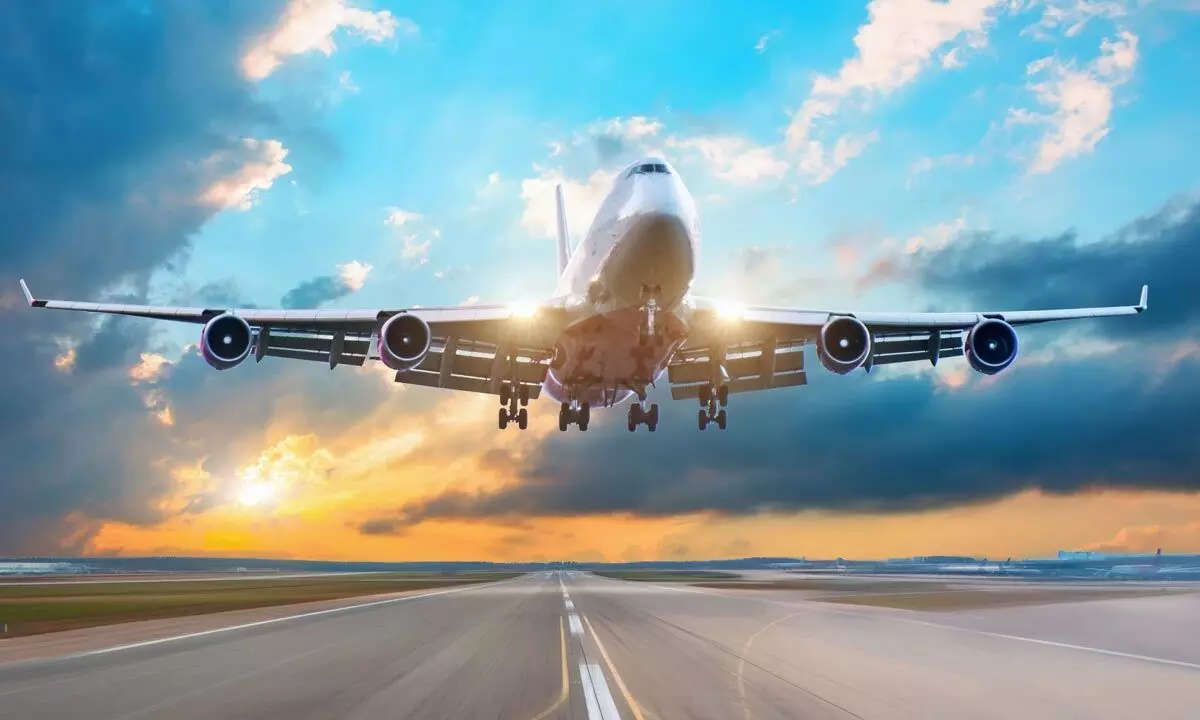Is gender bias holding women back in aviation industry?
Only 6% of commercial pilots, 26% air traffic controllers, 18% flight dispatchers and 9% of aerospace engineers are women: IAWA
image for illustrative purpose

Aviation is working to achieve gender balance across the sector, however, the industry is aware that work is still needed to encourage balance in technical areas such as engineering and flight crew. More work needs to be done, to encourage interest from young women to join technical areas and men to join frontline staff.
The International Aviation Women's Association exists to promote air transport as a career choice for women, and support their advancement in the industry.
Air India and Vistara Airlines in India have both started offering woman passengers special services to ensure they are free from harassment. The services, which include a woman-only row of seats or no middle seating for female passengers have proved popular amongst customers and are not charged for.
Airbus promotes gender equality through a number of programmes aimed at inspiring women and young girls to become involved with aviation. ICAO has been supporting the 'dreams soar' project, where the first ever Afghan-American female pilot, Shaesta Waiz, has been conducting an around-the-world flight to encourage more young women to become pilots.
A global study on gender diversity in the aviation and aerospace industry was published by International Aviation Womens Association (IAWA), known as the soaring through the glass ceiling report. Seven organizations joined forces to address a widely held view that aviation and aerospace lag behind other parts of the economy when it comes to the advancement of women. When we consider jobs, for example, the study identified that only 6 per cent of commercial pilots, 26 per cent air traffic controllers, 18 per cent flight dispatchers and 9 per cent of aerospace engineers are women.
According to numerous studies, a diverse workforce signals an attractive work environment for talent, a competent management for investors, and encourages diverse idea exchange helping organizations to foster innovation and gain a competitive edge.
25by2025 is an IATA initiative that came to life to raise awareness of the need to improve female representation in the aviation industry. This voluntary initiative is an initial step to making the aviation industry more gender balanced. With a large number of airlines and industry partners already committing to 25by2025, we are paving the way for an industry that recognizes female talent and creates opportunities for women in which they can thrive.
Men dominate the senior ranks of aviation companies. According to IATA only three per cent of CEOs at the top 100 airline groups are women, and women make up only five per cent of pilots and 10 per cent of engineers.
According to the International Air Transport Association (IATA) which represents 290 airlines, the proportion of women holding C-level roles in the industry is just three per cent. For some businesses it's a matter of regulatory compliance or corporate social responsibility; others regard it as a key source of competitive advantage. The aviation sector, however, continues to have one of the poorest gender balances. The lack of females is particularly apparent at leadership level. The number of women in top roles is increasing, but at the current rate of change – one percentage point per year between 2017 and 2020 – it will be 2056 before the airline industry reaches gender parity at the board level.
Some of the main obstacles aspiring female leaders face include bias as well as assumptions about women`s interests and capabilities. Gender stereotypes also have a major impact on women's career progression. As an example, care and empathy are typically described as feminine traits, while competition, confidence, and assertiveness are often viewed as masculine traits. When female leaders exhibit some of the latter, they are often criticized or viewed unfavourably.
The aviation industry in India has grown at a steady pace of 16 per cent over the last decade. At this pace, Goldman Sachs forecasts that India is slated to be the third-largest in the world. To continue on its growth trajectory, the industry needs to adapt quickly to growing demands of the workforce and continue harnessing the potential of and presenting opportunities to women in aviation. Women have been deeply involved in various departments in the field, be it steering the airline as senior management, from the cockpit, from the engineering and maintenance hangars or from behind the scenes at various airports and offices; making operations efficient and seamless.
The global aviation industry has a real opportunity to put inclusion at the heart of the restart post Covid-19 – an exciting period of change as aviation companies become more purpose led to attract and retain talent and customers through our next chapter of recovery and growth.

